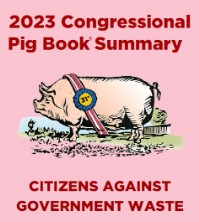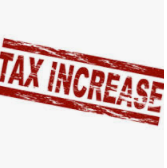
Eliminate Earmarks For The F-35 JSF Program
1-Year Savings: $1.5 billion
5-Year Savings: $7.5 billion
The many problems of the JSF make it impossible to justify Congress adding funding beyond that requested by the DOD. Total acquisition costs of the program now exceed $428 billion, 84 percent greater than the initial estimate of $233 billion, with projected lifetime operations and maintenance costs of $1.727 trillion.
In February 2014, then-Under Secretary of Defense for Acquisition, Technology, and Logistics and now Air Force Secretary Frank Kendall referred to the purchase of the F-35 as “acquisition malpractice.” On April 26, 2016, the late John McCain (R-Ariz.), who was then chairman of the Senate Armed Services Committee, called the JSF program “both a scandal and a tragedy with respect to cost, schedule, and performance.”
The JSF has been dragged down by an array of persistent issues, many of which were highlighted in the FY 2019 DOD Operational Test and Evaluation Annual Report, which revealed 873 unresolved deficiencies including 13 Category 1 items, involving the most serious flaws that could endanger crew and aircraft. While this was an overall reduction from the 917 unresolved deficiencies and 15 Category 1 items found in September 2018, the report stated that “although the program is working to fix deficiencies, new discoveries are still being made, resulting in only a minor decrease in the overall number of deficiencies.”
Many of the problems with the F-35 program can be traced to the decision to develop and procure the aircraft simultaneously. Whenever problems have been identified, contractors needed to go back and make changes to planes that were already assembled, adding to overall costs. Speaking at the Aspen Security Forum on July 24, 2015, then-Air Force Secretary Deborah Lee James stated, “The biggest lesson I have learned from the F-35 is never again should we be flying an aircraft while we’re building it.”
Members of Congress have aggravated this problem, routinely funding the acquisition of more JSFs beyond that requested by the Pentagon. This included three earmarks costing $1.5 billion in FY 2023, with most of the money earmarked to acquire 18 additional aircraft: 11 for the Air Force and seven for the Navy. Because the JSF development phase has yet to be completed, additional funding will be needed to retrofit the JSFs purchased via earmarks, adding to overall program costs. Since FY 2001, legislators have added 37 earmarks for the JSF program, costing $12.1 billion.
One reason for the consistent and costly support for JSF earmarks is the widespread distribution of F-35 supply lines across the country. According to a map showing the local economic impact of the JSF on Lockheed Martin’s website, the only states that do not have at least one supplier for the aircraft are Hawaii, Louisiana, and North Dakota. This gives all but nine representatives and six senators more than enough incentive to keep greasing the wheels.
Eliminate Sugar, Dairy, And Peanut Subsidies
1-Year Savings: $1.3 billion
5-Year Savings: $6.4 billion
The U.S. operates a number of antiquated agricultural subsidy programs that should be scrapped. These recommendations are particularly timely since the Farm Bill is scheduled to be reauthorized for five years in 2023.
At the top of the list is the sugar program, an outdated, Soviet-style command-and-control program that uses import quotas, loans, marketing allotments, price supports, and tariffs to artificially inflate the price of sugar. The federal government establishes a minimum price for sugar in the U.S., which averages roughly double the world price. The government also imposes marketing controls, limiting how much sugar processors are allowed to sell. These allotments are enforced and administered by a small cartel of sugar processors.
The current system establishes tariff rate quotas imposed on sugar imports. These require that 85 percent of sugar purchases be bought from domestic sugar producers and limit the amount of sugar that can be imported each year from 40 different countries. Any sugar that is imported beyond the quota is subject to a tariff, contributing to the high cost of sugar in the country.
A November 2017 American Enterprise Institute (AEI) analysis found that, “The welfare transfer to sugar growers and processors is quite large in the aggregate, hovering around $1.2 billion. Losses to households are diffused, about $10 per person per year but large for the population as a whole, in the range of $2.4–$4 billion.”
The program has been costly to the economy as well. According to the Department of Commerce, “Between 1997 and 2014, 132,000 jobs were lost in sugar-using industries.” For every sugar-growing job that is protected under the program, about three manufacturing jobs are lost.
Many U.S. companies have decided to close their U.S factories and relocate the jobs to Mexico or Canada where they can avoid paying the artificially high sugar prices. One area that has been hit particularly hard by this trend is Chicago, Illinois, which was once home to several candy producers and had thousands of manufacturing jobs in the city. But in recent years, candy companies including Mars Wrigley, Fannie May and Brach’s have closed their factories in Chicago.
Few examples exist of more conspicuous public regulation for the benefit of entrenched special interests at the expense of taxpayers than the U.S. sugar program. The program should be replaced with market-oriented reforms to help consumers, food manufacturers, taxpayers, producers, and the environment. Eliminating the sugar program would save taxpayers $1.2 billion in the first year, and $6 billion over five years.
The dairy subsidy is a close second to the sugar program due to its complex tangle of subsidies and price supports. Through a series of federal Milk Marketing Orders, which are based historically on the distance from Eau Claire, Wisconsin, to where the milk is produced, the government sets minimum prices that dairy processors must pay for Grade A milk. These vary from region to region, and milk producers are forbidden to sell their product in another region.
While taxpayers dodged the worst outcome when the 2014 Farm Bill did not include the proposed Dairy Market Stabilization Program, the conference agreement instead included a new Dairy Product Donation Program, which allows the purchase of dairy products at market prices “for donation to public and private nonprofit organizations that provide nutrition assistance to low-income populations.” The program, which was never considered in the House or Senate, would require the USDA to buy dairy goods when market prices drop below a certain threshold and continue these purchases until market prices resurface above the established threshold.
Unfortunately, the 2014 Farm Bill did institute the dairy margin coverage (DMC) program, which provides monthly payments to dairy farmers when milk prices are low relative to an index of dairy feed prices. Total DMC payments in recent years have averaged about $500 million annually. As with other agriculture industries, the dairy market has also become more concentrated resulting in most federal subsidies going to large dairy farmers while smaller farmers are left with fewer benefits.
The end result is a rich deal for dairy farmers. One 2018 study found that government subsidies accounted for 73 percent of revenue for the industry.
Another analysis estimated that taxpayers have paid for $477.9 billion in
sugar subsidies between 1995 and 2021.
The best solution for taxpayers and consumers is for milk markets to be deregulated and made to resemble other competitive industries. Eliminating the dairy subsidy would save $24.2 million in the first year and $121 million over five years.
Finally, Congress should do away with the peanut subsidy. Programs designed to support the peanut industry have existed in some form since the early 1900s. Originally, peanuts were subsidized with a production quota; only those who owned or leased the quotas from the government were allowed to produce peanuts. These valuable quotas drove the cost of peanuts to nearly twice the world price. The 2002 Farm Bill eliminated production quotas, but Congress chose to create a new direct payment program in order to compensate farmers for removing this “resource,” costing taxpayers $1.3 billion over five years.
The direct payment program created a system of payments and countercyclical payments to “historic peanut producers,” or those who grew peanuts from 1998-2001. Unbelievably, the farmers were paid regardless of whether they currently produced peanuts. The 2014 Farm Bill eliminated direct payments, but greatly expanded crop insurance in an effort to make up for the loss of such payments. Producers of covered commodities, including peanuts, chose in late 2014 to participate in either the Agriculture Risk Coverage (ARC) program or the Price Loss Coverage (PLC) program. Under the ARC program, USDA makes a payment for a covered crop in any year that “actual crop revenue” for the commodity is less than its “agriculture risk guarantee.”
Under the PLC program, payments are made to farmers when the price for a crop dips below its “reference price.” The Farm Bill set the reference price for peanuts at $535 per ton. A January 29, 2018 AEI report put the benefits of the PLC program, which pays farmers $300 per acre whether they produce peanuts or not, into perspective: “$300 per acre on an average of about 250 acres is $75,000 in taxpayer payments to the average-sized peanut operation, over three times the US poverty line wage for a family of three or four, and almost 50 percent higher than the median household income. These subsidies are being paid to business owners with an average net worth that exceeds $1.5 million.”
Many economists believe that the cost of the expanded crop insurance programs will significantly exceed initial estimates, as crop prices are beginning to fall much sooner than projected. A December 8, 2016, CBO report found that if the ARC and PLC programs were eliminated for all crops, taxpayers would save $4.2 billion over the next decade. Scrapping the peanut subsidy would save $53.5 million in the first year and $267.3 million over five years.

















